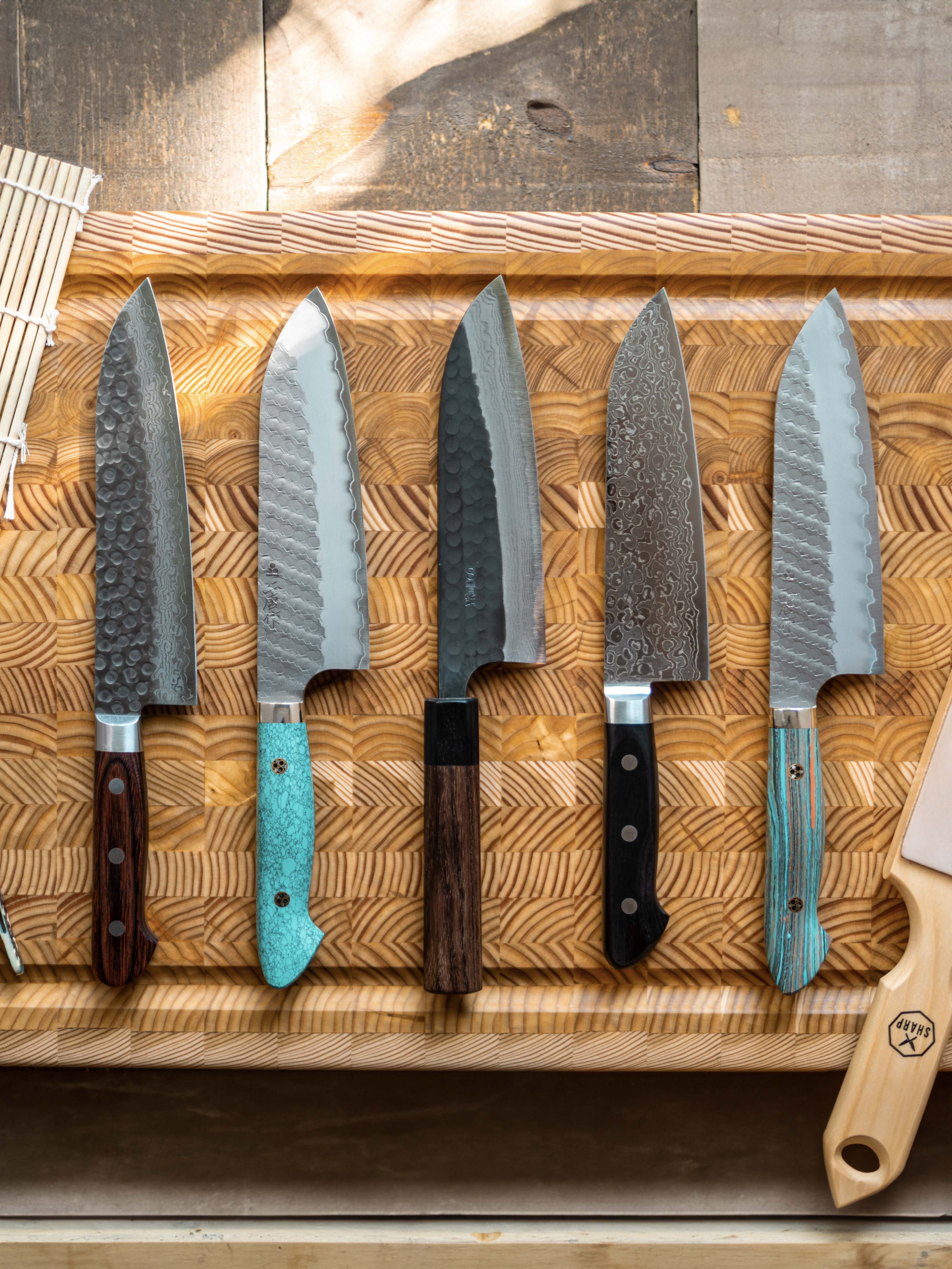Menu

THE BLACKSMITH
NIGARA HAMONO
- Choosing a selection results in a full page refresh.


















Usually ready in 1 hour
| Blade Length | 165 mm |
| Total Length | 310 mm |
| Steel | Aogami (Blue) Super Stainless Clad |
| Handle | Ebony |
| Ferrule | N/A |
| Rockwell | 63-65 |
| Height Spine to heel | 51 mm |
| Width at Spine | 2.1 mm |
| Weight | 149 grams |
| Bevel | Double (50/50) |
The Blacksmith
Nigara Hamono is located in Hirosaki city, Aomori Prefecture, on the west coast of the very northern tip of the main island of Honshu, Japan. Their family has a 350 year old history of making knives and swords and more recently has expanded into structural steel beams for use in construction. Tsuyoshi Yoshizawa stands as the 8th generation smith in the lineage of blacksmiths at Nigara Hamono and creates knives with his younger brother and two other craftsmen.
Nigara Hamono knives are characterized by their signature tsuchime pattern, as well as play with stainless damascus. These knives stand out for their aesthetic appeal, thinness behind the edge, and functionality, given they make their steel in house, and work primarily with high powdered stainless steels. They produce uniquely versatile profiles, ranging from very flat “kiritsuke nakiris” to aggressively curved “kiritsuke gyutos”.
The Knife
Santoku translates to three virtues. Meat, fish, and vegetables, or slicing, dicing, and chopping. No matter what way you look at it, it implies the versatility of the knife. While you sacrifice some of the slicing capability of a larger gyuto, don't be fooled by its size, the santoku can get 99% of your kitchen tasks done without breaking a sweat, which is probably why its the most popular shape in Japanese home kitchens.
Follow these care recommendations for your Japanese knives to protect the edge and keep them sharp as long as possible:
All products are shipped within 24 hours. We offer same day shipping for products ordered by 12pm. Please allow 4-7 business days for your shipment to arrive with standard shipping. Expedited shipping options are also available at checkout.
We offer free shipping on orders within Canada over $150 CAD and free shipping on orders to the US over $200 USD.
Curbside pick-up is available at both our Hamilton and Etobicoke locations.
To make sure our customers are always satisfied, we offer full refunds on products for 14 days after receiving them. See our full return policy for details.
More questions? Check out our shipping policy, our return policy, or reach out to us directly.


The word "Santoku" translates to "three virtues" and refers to slicing, dicing, and chopping, or meat, fish, and vegetables, depending on who you ask. The name highlights the extreme versatility of the shape, which is why we recommend it most to home cooks. Santokus are typically in the 165 mm (6.5 inch) to 180 mm (8 inch) length range. They generally have a gentle curve that sweeps up toward the tip, so they can easily be used with an up and down chopping motion or a rocking motion.


AKA Blue Super: This steel is considered by many to be the best carbon steel available for knife making. Containing elevated levels of carbon, chromium and tungsten and with the addition of molybdenum it is easy to sharpen, gets super sharp, is less reactive to rust, and is less brittle (compared to other carbon steels).
Chemical Composition:
C 1.4-1.5% | Cr 0.3-0.5% | W 2.0-2.5% | Mo 0.3-0.5% | V 0.5%


MODERATE MAINTENANCE
Stainless clad knives have two softer outer layers of stainless steel around a harder core layer of carbon steel. The clad line (wavy line near the cutting edge of the knife) is where the layers of stainless steel end. Past this point, the exposed carbon steel is susceptible to rust or discoloration. This edge will develop a patina (a darkening of the steel; blue, dark grey, sometimes black colouration of the blade) no matter how well they are cared for. Stainless clad knives are great for those who want the easy sharpening of a carbon steel coupled with the rust resistant properties of stainless steel.

Nigara Hamono is located in Hirosaki city, Aomori Prefecture, on the north west tip of the main island of Honshu, Japan. Their family has been making knives and swords for more than 350 years and more recently has expanded into structural steel beams for use in construction. Tsuyoshi Yoshizawa stands as the 8th generation smith in the lineage of blacksmiths at Nigara Hamono and creates knives with his younger brother and two other craftsmen.
